Understanding Pitta Dosha | Symptoms, Home Remedies & Diet
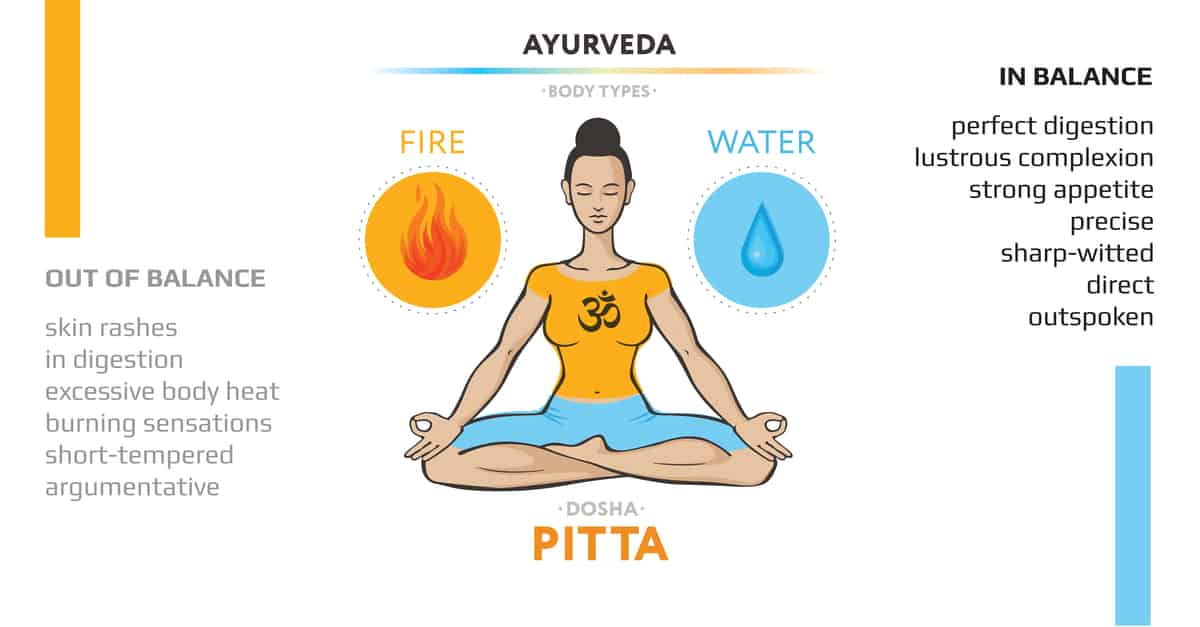
“Pittam sasneha tikshnoshnam laghu visram, saram dravam” Ashtanga Hridayam: Sutrasthana I: 11 This ancient Ayurvedic text describes the qualities of Pitta as oily, sharp, hot, light, fleshy-smelling, spreading, and liquid. Pitta dosha is the Ayurvedic mind-body type associated with “fire” and “water.” It governs our metabolism and energy production and is related to all heat-related things in the mind and body. It is also known as the dosha of “transformation.” Pitta dosha influences the digestive power or 'Agni.'
Physical Characteristics of Pitta Dosha Person Pitta's predominant individuals are generally of medium size and built with a sharp mind and strong intellect. They are blessed with exceptional digestion and have warm body temperatures. They have oily, sensitive skin and interrupted sleep patterns.
Pitta Effect
An imbalance in any of the doshas has repercussions on our mind, body, and emotional well-being. An out-of-balance Pitta results in excess stomach acid, skin rashes, acne, and loose bowel movements. These individuals tend to become more controlling and fiery in nature. They develop workaholic tendencies and face sleep issues. Balancing Pitta is, hence, critical for overall well-being. Since Pitta dosha is warm, sharp, and pungent in nature, the basic rule for balancing is to engage in activities and foods that are cooling, sweet, and stabilizing. Balanced Pitta individuals have a lustrous complexion, excellent digestion, abundant energy, a strong appetite with a powerful intellect, superb concentration, and the ability to make good decisions. Read more about the signs of Pitta imbalance here.
How to Balance Pitta Dosha?
In this article, we will discuss ways and means of pacifying aggravated Pitta in the body.
- Physical Activities: Some of the best things people with strong Pitta tendencies can do are engage in cooling activities like swimming, strolling in nature (avoid the sun), doing light-hearted activities, spending time with loved ones and children and having a jovial and playful approach towards life. Reducing mental stress is most important for people with strong Pitta tendencies.
- Pitta pacifying diet: As per Ayurveda, food is not important just to fill the stomach, but it acts as a medicine for the body. Pitta is hot, sharp, fluid, sour, and pungent. The basis of the Ayurvedic diet is the rule of opposites and similarities. Hence, eating food that can nullify these qualities will help in balancing the Pitta in your body.
General Recommendation for a Pitta-Balancing Diet
Here are some dietary suggestions that act as basic guidelines for balancing Pitta, but Ayurveda still encourages listening to your own body and accordingly making the right food choices for you. Some Pitta-types have specifically a strong digestive fire and find that they can endure more food variety than others.
Here are some food items that can be enjoyed:
- Food items that are naturally sweet, bitter, and astringent.
- Food items that are cool, both energetically as well as in temperature.
- A balanced diet of whole, freshly cooked food.
- A diet with most beans.
- Some cooling herbs and spices like fennel, coriander, and cardamom.
- Dairy products (if you can digest them), but avoid consuming milk with meals. You can have it an hour before or after having the meal.
- Some condiments that are cooling as well as sweet, such as cilantro chutney or cucumber chutney.
- Regular timing for your meals.
- Add a moderate amount of high-quality olive, sunflower, and coconut oils or ghee to your daily diet.
- Try to opt for organic fruits and vegetables.
Here are some food items that should be avoided:
- Spicy foods that have chili and cayenne peppers
- Items like tomatoes, yogurt, vinegar, and fermented foods have a tendency to increase the Pitta in the body.
- Food items that are pungent, sour, and salty.
- A food item which is warm, both energetically as well as in temperature.
- Food items that are deep fried.
- Eating fresh fruits in combination with other foods.
- Red meat
- Caffeine, nicotine, or any other stimulants. If you love coffee, try adding milk or almond milk to balance the effects.
- Alcohol, except for an occasional beer or white wine.
- Canned and processed foods should be avoided as they contain preservatives and artificial additives. They are also heavy on salt and sour tastes.
Pitta-Balancing Herbs
The amalgamation of Ayurvedic herbs is very useful when it comes to balancing the doshas. Ayurveda uses herbs and herbal combinations for cooling the heat of Pitta and supporting body and mind balance. Here are some herbs and formulations especially used for balancing Pitta:
- Amalaki is one of the best herbs for supporting Pitta.
- Healthy skin, blood cleanser, and soothing skin balm supports calm and clear skin.
- Triphala can not only soothe the eyes and support their functionality but also support healthy digestion.
Suggestions for a Pitta-Pacifying Lifestyle
To enjoy a Pitta-pacifying lifestyle, you must follow these:
- Try to surrender rather than control.
- There should be regular times for eating, sleeping, working, and other activities. Have meals on time regularly and avoid over or under-eating. Eating three meals at regular intervals helps in calming a fiery digestive system. Do not skip meals or wait until you are famished to eat.
- Make sure you also make time to play and relax.
- Try to keep your mind and body cool.
- Try a daily self-massage with warm coconut or brahmi coconut oil.
- Enjoy sweet and soothing music.
- Regular exercise and pranayama are great help in reducing the heat in the body. Yoga prescribes a lot of pranayama techniques which can be practiced to balance Pitta.
- Eat in a relaxed and quiet environment, allowing enough time to chew.
- Always consume freshly cooked food which is pleasing to the eye as well.
Foods for a Healthy Pitta Diet:
Ayurveda prescribes cold food to help neutralize the impact of aggravated Pitta in the body. Cold refers to food that has cooling and hydrating properties. Pitta is pacified by consuming juicy, cooling foods with high water content. A few foods to consider while tackling Pitta are:
Oils: Natural, homemade “Ghee” is the best source of essential fatty acids for the body. Other alternatives are olive or coconut oils. Avoid Almond, Sesame, Mustard, or Sunflower oils as they are more heated in nature.
Spices and Condiments: Avoid very spicy chilies and peppers, cayenne, fenugreek seeds, etc.
Nuts and seeds: Avoid peanuts, walnuts, cashew nuts, etc. These nuts have a property called “Potency,” which intensifies Pitta. Blanched and peeled almonds can be consumed in small quantities. Sunflower, Pumpkin seeds, and Watermelon seeds can also be eaten.
Vegetables: Vegetables like tomatoes, radishes, eggplants, raw onions, and ginger should be avoided as they have an inherent tendency to increase the Pitta in the body. Eat avocado, broccoli, lady finger, cauliflower, peas, celery, coriander, pumpkin, sweet potato, lettuce, cucumber, leafy greens and even potatoes.
Fruits: Sour fruits like grapes, oranges, pineapple, prunes, lemons, limes, etc should be avoided. Eat apples, apricots, coconut, dates, pear, papaya, berries, cherries, pomegranate, mango, melons and figs.
Dairy: Sour cream, yogurt, salted cheese, and butter to be avoided. Instead, try unsalted butter, cow’s milk, goat’s cheese, ice cream, and fresh yogurt.
Sweets: Pitta is pacified by sweet taste. Opt for naturally sweet foods. The sweet taste is cooling and grounding in nature. Its satisfying property helps in pacifying Pitta. Except for molasses and honey, all sweeteners can be consumed in moderation.
Home Remedies to Help Balance Pitta Levels
Some home remedies that can help manage Pitta imbalance symptoms and reduce its levels are:
- Cow ghee works as a remedy to reduce Pitta and body heat.
- Nannari sharbat concentrate is easily available in the market. It is made using dried and chopped Indian Sarsaparilla roots that help in pacifying Pitta immediately. If you want, you can also add a few basil seeds or soaked sabja to it.
- Maintain a balance between activity and rest. Too much activity can heat the already heated body. In the same way, due to inactivity, there can be unnatural shifts in the Pitta levels.
- Some yoga asanas that are suitable for managing Pitta are
- Child pose (balasana)
- Marjaryasana
- Cobra pose (bhujangasana)
- Spinal twist (jathara parivartanasana)
- Moon salutation (chandra namaskara)
- Superman pose (vipareeta shalabhasana)
- Corpse posture (shavasana)
Pitta Diet to manage Pitta Energy with Vedi Herbals
Pitta’s pacifying diet can be said to be more of a practice, as Pitta is subjective in nature. It is also equally important to listen to our body. Our body responds differently to foods during different seasons, so we should adjust our diet seasonally and follow a body-centric approach rather than strictly following the rules of the mind. Also, read how understanding your Ayurvedic Dosha type can revolutionize your life.
Frequently Asked Questions
Q: Is curd good for Pitta dosha?
A: Curd is hot in nature and increases the Pitta dosha. So, it is better not to consume it if you have Pitta dosha.
Q: Which milk is good for Pitta dosha??
A: You can have cow milk if you warm and spice it suitably. It helps in calming the Pitta dosha.
Q: Does rice increase Pitta?
A: Rice is generally good for balancing Pitta dosha. It is considered to be light, smooth, nourishing, and cooling in nature.
Q: Do bananas increase Pitta?
A: Due to its sweet taste, banana mitigates the Pitta. But if eaten in excess, it may increase the Pitta dosha.




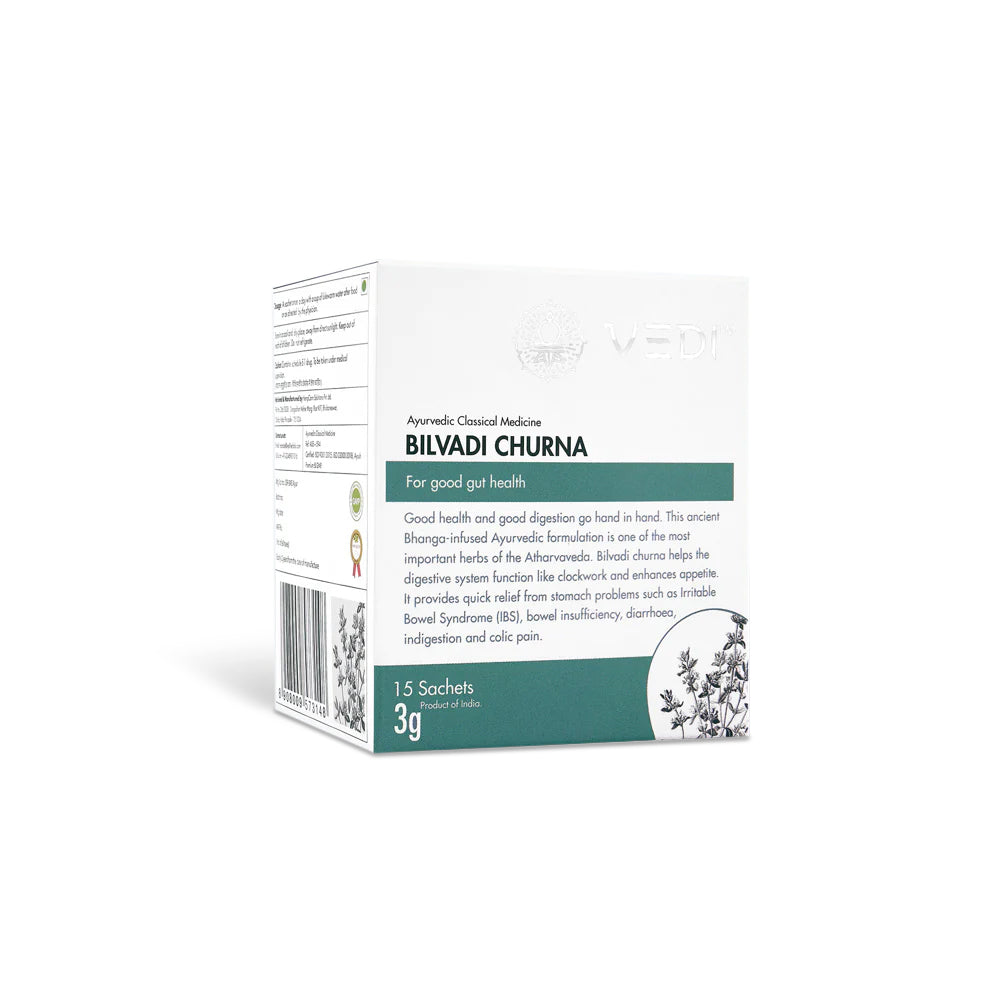
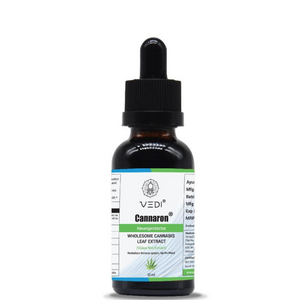
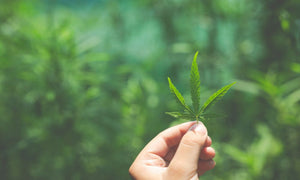
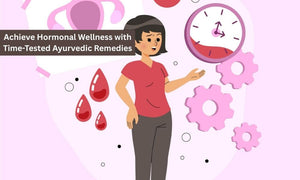


6 comments
You’re welcome! We are glad you’re taking steps to balance your Pitta dosha. Following a Pitta-pacifying lifestyle and diet can bring significant relief. If you need personalized advice, remedies, or meal plans, feel free to ask. Wishing you good health and balance!
There is no simple answer for this. The doshas are variable and depends on several factors, such as age, season, geography, original constitution of the doshas since the birth, which is based on the month of birth. It would be the best to consult our Ayurvedic doctors for a correct diagnosis of your prakruti and vikruti.
Pitta dosha untu. Atiyada tale novu, nantara vanti aguttade. 4,5, tingaligomne.
Very nice article and super good information it helped me a lot
I m suffering from pitta dosa since Last 6 years, I will follow dis rule to reduce my pitta dosa , n thanku very much Vedi herbal.